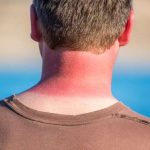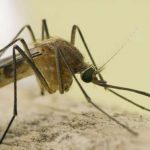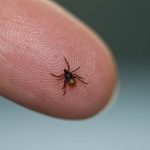 Ah summer! Who doesn’t love long days of backyard barbecues and walks on the beach? If you’re like us, you don’t want to spend even one of those days either sick or injured — or let’s face it — worrying about getting sick or injured. So here’s our guide to summer hazards, including ones that you can stop worrying about because your chances of encountering them are just about nil (like running into a shark or a brain-eating amoeba) to the legitimately worrisome (hello, food-borne illness and tick bites). Here’s how to stay safe, happy, and worry free all summer long.
Ah summer! Who doesn’t love long days of backyard barbecues and walks on the beach? If you’re like us, you don’t want to spend even one of those days either sick or injured — or let’s face it — worrying about getting sick or injured. So here’s our guide to summer hazards, including ones that you can stop worrying about because your chances of encountering them are just about nil (like running into a shark or a brain-eating amoeba) to the legitimately worrisome (hello, food-borne illness and tick bites). Here’s how to stay safe, happy, and worry free all summer long.
Recreational Water Illnesses (RWI):
 Stats: RWI cases have increased substantially over the last two decades — as much as 200%.
Stats: RWI cases have increased substantially over the last two decades — as much as 200%.
Risks: All public swimming areas can harbor bacteria that cause gastrointestinal, skin, ear, respiratory, eye, neurologic, and wound infections. The most common: diarrhea. Accidentally swallowing water that’s been contaminated with feces boosts your risk; that’s why public pools ask you to shower before swimming.
Should you worry?: Anyone who swallows contaminated water can catch a RWI. Bacteria can live for days, even in properly chlorinated pools. As for those brain-eating amoebas you’ve heard about in the news, no need for alarm — there were just 31 infections reported in the United States between 2003 and 2012.
Drowning:
 Stats: Drowning ranks fifth among the leading causes of unintentional injury death in the United States, with most happening on beaches and boats.
Stats: Drowning ranks fifth among the leading causes of unintentional injury death in the United States, with most happening on beaches and boats.
Risks: Being unable to swim is your top risk factor. In 2010, 88% of people who drowned in a boating accident were not wearing life jackets. Drinking alcohol also raises your risk.
Should you worry?: Just be smart. If you haven’t already learned to swim, take lessons. When boating, always wear a life jacket, and leave the booze until you’re done in the water for the day.
Shark Attacks:
 Stats: The National Safety Council says your chances of death by shark attack are approximately 1 in 3.7 million. There were 47 shark attacks in the United States in 2013.
Stats: The National Safety Council says your chances of death by shark attack are approximately 1 in 3.7 million. There were 47 shark attacks in the United States in 2013.
Risks: Swimming near sandbars and steep drop-offs, in deep water, or during twilight hours — sharks like these conditions.
Should you worry?: No, but if a lifeguard tells you there’s a shark nearby or you spot one yourself, then get out of the water immediately.
Lightning Strikes:
 Stats: The odds of being struck by lightning in any given year are 1 in 500,000.
Stats: The odds of being struck by lightning in any given year are 1 in 500,000.
Risks: People who work outside are more likely to get struck by lightning — more than a third of deaths occur on farms.
Should you worry?: Probably not, but when you see thunderstorms in the forecast, use common sense: don’t start an 18-hole game of golf or plan a day at the pool. When thunder begins to roar, go inside as soon as possible.
Food-borne Illnesses:
 Stats: Each year, 1 in 6 Americans (48 million) contract food poisoning. Of those, 128,000 are hospitalized, and 3,000 die.
Stats: Each year, 1 in 6 Americans (48 million) contract food poisoning. Of those, 128,000 are hospitalized, and 3,000 die.
Risks: Food poisoning peaks in the summer months when warmer temperatures cause foodborne bacteria to flourish (they grow fastest at temperatures between 90 and 100 degrees).
Should you worry?: Food poisoning is preventable. Cook your meats thoroughly and don’t cross-contaminate. When packing a cooler, for instance, wrap raw meats securely to ensure their juices don’t touch any other edibles. As for leftovers? Any food that’s been unrefrigerated for more than two hours should be tossed.
Fireworks Injuries:
 Stats: In the month around Independence Day, 200 people on average go to the emergency room every day with fireworks-related injuries, according to the Consumer Product Safety Commission.
Stats: In the month around Independence Day, 200 people on average go to the emergency room every day with fireworks-related injuries, according to the Consumer Product Safety Commission.
Risks: Firecrackers that explode into the air aren’t the only types of fireworks that can injure you severely. In 2012, sparklers — which burn at 1,200 degrees Fahrenheit, same as a blowtorch — accounted for 12% of fireworks injuries. Most fireworks injuries are to the hands, fingers, and face.
Should you worry?: Most fireworks are legal in 42 states, but that doesn’t mean they’re safe. Your best bet: go to a professional fireworks display instead.
Sunburns:
 Stats: In a CDC report, more than a third of the American population reported having a sunburn in the previous year.
Stats: In a CDC report, more than a third of the American population reported having a sunburn in the previous year.
Risks: Regardless of skin tone, anyone can get sunburned. People who have fair skin, live at high altitudes, or take certain medications are at increased risk.
Should you worry?: Yes. Getting a sunburn is a big deal, especially if the burn blisters. Protect yourself with sunscreen (find the best one for you), stay in the shade during midday hours, and wear a wide-brimmed hat.
Heat Illness:
 Stats: Heat is the top weather-related killer in the United States, accounting for about 700 deaths a year.
Stats: Heat is the top weather-related killer in the United States, accounting for about 700 deaths a year.
Risks: Your body cools itself naturally through sweating, but sometimes, that’s not enough. Heat illnesses — including heat cramps, heat exhaustion, heat rash, and heat stroke — occur when a person’s body temperature rises rapidly.
Should you worry?: Even the young and healthy can be affected by the heat if they work a strenuous job (like farming or construction) or exercise in hot weather. Pace yourself, drink more water than usual, and limit outdoor activities on the hottest days of the year.
West Nile:
 Stats: Between 1999 and 2012, an average of 2,648 West Nile cases were reported to the CDC each year.
Stats: Between 1999 and 2012, an average of 2,648 West Nile cases were reported to the CDC each year.
Risks: In 2013, all 48 contiguous states and the District of Columbia had confirmed cases of West Nile, but Midwestern and Southern states had higher rates of incidence.
Should you worry?: No. Most people infected by West Nile experience minor symptoms such as headache and fever. In less than 1% of people who contract it, the virus causes a serious neurological infection that could include inflammation of the brain and surrounding membranes. If you’re older than 50 or have a weakened immune system, then you’re more likely to develop a severe infection.
Lyme Disease:
 Stats: The CDC estimates that about 300,000 Americans (one in 1,000) are diagnosed with Lyme disease annually.
Stats: The CDC estimates that about 300,000 Americans (one in 1,000) are diagnosed with Lyme disease annually.
Risks: Living in Connecticut, Delaware, Maine, Maryland, Massachusetts, Minnesota, New Hampshire, New Jersey, New York, Pennsylvania, Vermont, Virginia, or Wisconsin may also increase your risk of contracting Lyme. In 2012, 95% of Lyme cases were reported from those 13 states.
Should you worry?: Better safe than sorry. Wear long sleeves and pants in bushy or wooded areas and apply an insect repellent with a 20% or higher concentration of DEET. Then, inspect yourself thoroughly when you get home. Remember: deer ticks can be as small as the head of a pin.
[graphiq id=”1joAFOKGWUt” title=”Lyme disease” width=”500″ height=”748″ url=”https://w.graphiq.com/w/1joAFOKGWUt” link=”https://www.graphiq.com” link_text=”Visualization by Graphiq” ]
Poison Ivy, Sumac and Oak:
 Stats: About 85% of people who touch poison ivy, sumac, and oak develop a rash, according to the American Academy of Dermatology. It affects millions of Americans annually.
Stats: About 85% of people who touch poison ivy, sumac, and oak develop a rash, according to the American Academy of Dermatology. It affects millions of Americans annually.
Risks: These problem plants grow everywhere in the U.S. except for Alaska and Hawaii. Not just in the woods, either — they can also grow at the beach, in your backyard, and in parks.
Should you worry?: No. Even widespread, severe rashes can be cleared up with corticosteroid pills; most others can be managed with hydro-cortisone cream, calamine lotion, and oral antihistamines. Expect symptoms to last about a week.
[graphiq id=”f34wa4WinnD” title=”Sumac” width=”500″ height=”615″ url=”https://w.graphiq.com/w/f34wa4WinnD” link=”https://www.graphiq.com” link_text=”Visualization by Graphiq” ]
Trampoline Injuries:
 Stats: Between 2002 and 2011, people (mostly kids) injured in trampoline accidents made more than 1 million trips to the emergency room.
Stats: Between 2002 and 2011, people (mostly kids) injured in trampoline accidents made more than 1 million trips to the emergency room.
Risks: Fractures, dislocations, sprains, strains, bruises, and other soft-tissue injuries may result from a fall. Head and neck injuries are also a possibility.
Should you worry?: If you already have a trampoline in your yard, then you need to be vigilant about safety. The American Academy of Pediatrics recommends you allow one person to jump at a time, that you don’t attempt any flips, and be sure there’s padding on the edges of the trampoline.
Car Accidents:
 Stats: In 2012, more traffic deaths occurred in June, July, and August than any other time of the year.
Stats: In 2012, more traffic deaths occurred in June, July, and August than any other time of the year.
Risks: When school’s out, more teens drive, and more families go on vacation. And with more cars on the road, accidents tick up. There are other factors, too: if your tires are worn out, then hot weather can cause the air inside them to expand, which can lead to a blowout, and construction zones increase likelihood of a crash.
Should you worry?: You shouldn’t cancel your summer getaway for fear of a crash. Buckle up, eliminate distractions (no texting!), and obey the speed limit. Prep for a long drive with a trip to the mechanic to ensure that all your car’s major systems are in good shape.
Swimmers’ Ear:
 Stats: This infection leads to an estimated 2.4 million health care visits annually.
Stats: This infection leads to an estimated 2.4 million health care visits annually.
Risks: Allowing water to get stuck in your ear while swimming makes your ear canal a breeding ground for the bacteria that cause swimmer’s ear.
Should you worry?: As long as you dry your ears thoroughly after swimming by gently rubbing your outer ears with a cloth, you should be fine. For stubborn clogs, resist the urge to stick a Q-tip into your ear and instead put a hair dryer on low and point it toward your ear — that should do the trick.
Grilling Injuries:
 Stats: Between 2007 and 2011, an average of 8,800 grill fires occurred annually. These fires caused an annual average of 10 deaths, 140 injuries, and $96 million in property damage, according to the National Fire Protection Association.
Stats: Between 2007 and 2011, an average of 8,800 grill fires occurred annually. These fires caused an annual average of 10 deaths, 140 injuries, and $96 million in property damage, according to the National Fire Protection Association.
The Risks: Dusting off your propane grill after a long winter of cooking indoors is exciting, but can also be a fire hazard.
Should you worry?: Follow grilling safety tips and you should be able to enjoy a safe grilling season.
Carcinogens From Grilling:
 Stats: Eating charred meat often may increase your risk of pancreatic cancer by up to 60%, and postmenopausal women who consumed the most grilled, barbecued, or smoked meat over their lifetimes may have a 47% increased risk of breast cancer.
Stats: Eating charred meat often may increase your risk of pancreatic cancer by up to 60%, and postmenopausal women who consumed the most grilled, barbecued, or smoked meat over their lifetimes may have a 47% increased risk of breast cancer.
Risks: Grilling meat over an open flame can cause two carcinogens to form: heterocyclic amine (HCA) and polycyclic aromatic hydrocarbons (PAHs).
Should you worry?: Maybe. Research shows that your cancer risk increases the most if you eat grilled meat very frequently over a period of several years. You’re probably okay if you grill a couple times a week during the summer. Reduce your exposure with these six healthy-grilling strategies.
[graphiq id=”cE1PyevsSoJ” title=”Average Daily Maximum Temperatures” width=”600″ height=”530″ url=”https://w.graphiq.com/w/cE1PyevsSoJ” link=”https://www.graphiq.com/wlp/cE1PyevsSoJ” link_text=”Average Daily Maximum Temperatures | HealthGrove” ]
We want our community to be a useful resource for our users but it is important to remember that the community is not moderated or reviewed by doctors and so you should not rely on opinions or advice given by other users in respect of any healthcare matters.
Always speak to your doctor before acting and in cases of emergency seek appropriate medical assistance immediately. Use of our community is subject to our Terms of Use and Privacy Policy and steps will be taken to remove posts identified as being in breach of those terms.
